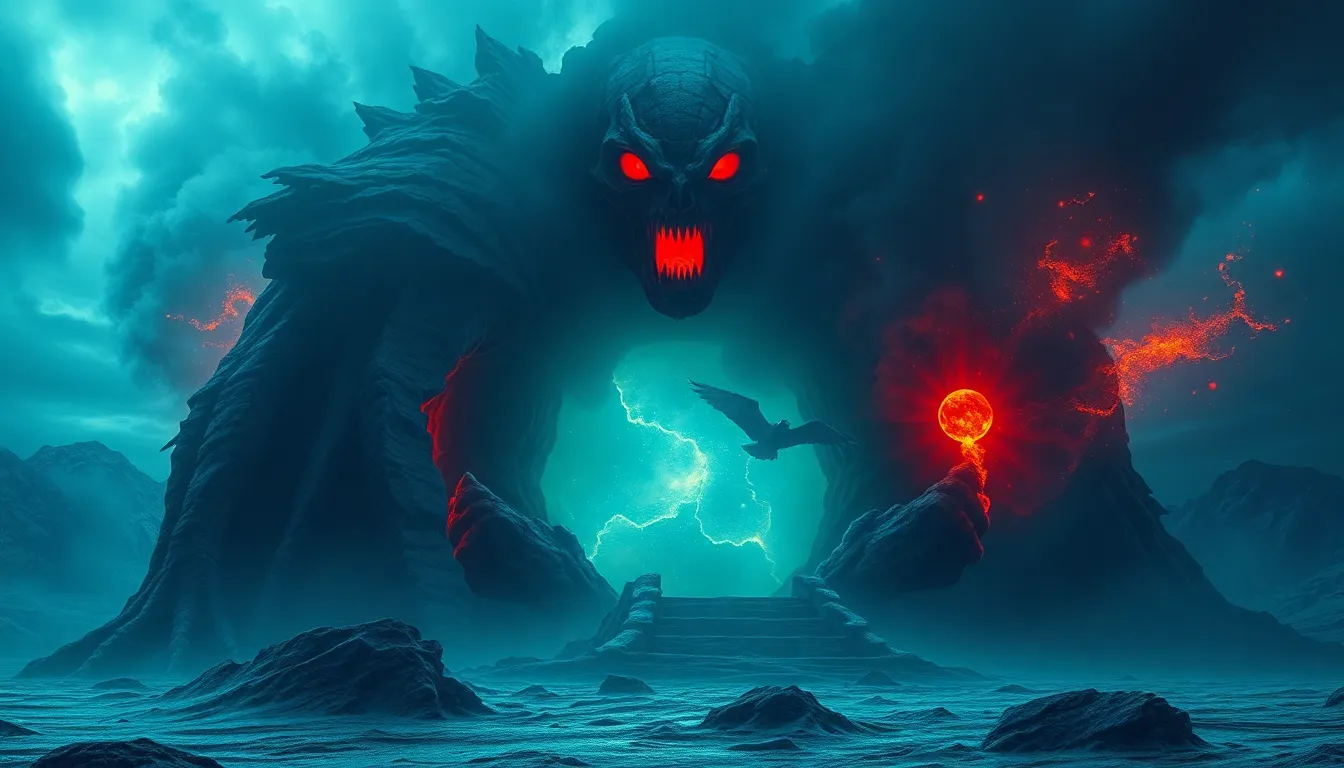The Great Flood: Myths That Challenge Our Understanding of History
Introduction: The Great Flood in Cultural Memory
The concept of a great flood is a recurring theme across various civilizations, echoing through ancient texts, oral traditions, and religious scriptures. From the biblical tale of Noah to the Mesopotamian Epic of Gilgamesh, these flood myths capture the imagination and curiosity of humanity. They serve not only as cautionary tales but also as reflections of the societies that crafted them.
Understanding these myths is crucial, as they challenge our historical perspectives and offer insights into the human condition, societal values, and collective fears. This exploration into the Great Flood reveals a tapestry of narratives that intertwine human experience with natural phenomena.
The Origins of Flood Myths: A Cross-Cultural Perspective
Flood myths can be traced back to ancient texts and oral traditions across the globe. These stories often share striking similarities, leading scholars to investigate their origins and the common experiences of the cultures that produced them.
- Mesopotamia: Home to one of the earliest recorded flood narratives, the Sumerians and Babylonians spoke of a divine flood sent to cleanse the earth.
- Greece: The myth of Deucalion and Pyrrha presents a flood sent by Zeus, aimed at wiping humanity from the earth due to their wickedness.
- India: The Matsya avatar of Vishnu tells of a great flood that wipes out life, with the god saving mankind through a boat.
- The Americas: Indigenous cultures, such as the Native American tribes, also possess their own flood stories, often depicting themes of survival and renewal.
The Epic of Gilgamesh: The First Recorded Flood Narrative
One of the oldest known narratives, the Epic of Gilgamesh, features a flood story that parallels many later accounts. In this epic, Utnapishtim, a character akin to Noah, is warned by the god Ea about an impending flood intended to destroy humanity.
Utnapishtim builds a large boat to save himself, his family, and various species of animals. The flood lasts for days, drowning the earth. Eventually, the boat comes to rest on Mount Ararat, and Utnapishtim sends out birds to find land.
This narrative is significant not only for its plot but for the themes it explores: the relationship between humanity and the divine, the quest for immortality, and the consequences of human actions. It reflects the values of ancient Mesopotamian culture, emphasizing the need for respect towards the gods.
The Biblical Account of Noah: Parallels and Divergences
The story of Noah’s Ark, found in the Book of Genesis, shares remarkable similarities with the Gilgamesh narrative. In this account, God decides to flood the earth due to humanity’s wickedness but spares Noah, who is instructed to build an ark.
- Parallels: Both stories feature a divine warning, the construction of a vessel, and the preservation of life through animal pairs.
- Divergences: The motivations of the deities differ, with the Judeo-Christian narrative emphasizing divine mercy alongside judgment.
These similarities and differences offer a window into how cultures interpret divine will and the moral lessons drawn from natural disasters, shaping our historical understanding of these myths.
Scientific Explanations for Flood Myths: Geological and Climatic Factors
While these narratives are often viewed through a mythological lens, scientific investigation has sought to uncover real-life events that may have inspired them. Potential explanations include:
- Tsunamis: Massive waves caused by earthquakes could have led coastal civilizations to recount flood tales.
- Glacial Melts: The end of the last Ice Age caused significant flooding in various regions, likely influencing local myths.
- Rising Sea Levels: Changes in climate and sea levels over millennia could have triggered flood stories among ancient peoples.
These geological and climatic factors suggest that beneath the surface of myth lies a foundation of historical reality that shaped the human experience.
The Role of Oral Tradition in Preserving Flood Myths
Oral storytelling has played a vital role in the evolution of flood narratives. These tales were passed down through generations, shaped by the cultural context and the experiences of the people telling them.
Indigenous cultures, in particular, have rich oral traditions that include flood stories. For example:
- Native American tribes: Many tribes have flood myths that convey moral lessons and emphasize the importance of living in harmony with nature.
- Australian Aboriginal culture: Stories often involve ancestral beings and the creation of the world, including floods that serve as cleansing events.
These narratives not only preserve cultural heritage but also offer insights into the values and beliefs of these communities.
Symbolism and Meaning: What Flood Myths Reveal About Societal Values
Flood myths often carry deep symbolism, reflecting societal values, fears, and aspirations. Common themes include:
- Rebirth: Floods often symbolize renewal and the possibility of starting anew.
- Punishment: Many stories depict floods as a divine response to human transgressions, highlighting moral lessons.
- Divine Intervention: The presence of deities in these narratives emphasizes the belief in a higher power influencing human fate.
Through these themes, flood myths reveal how societies understand their relationship with nature and the divine, shaping their worldviews and cultural identities.
Modern Interpretations and Adaptations of Flood Myths
Today, flood myths continue to inspire literature, art, and film. These adaptations often explore contemporary themes, such as environmental concerns and the human condition. Notable examples include:
- Literature: Novels often reinterpret flood narratives, using them as metaphors for personal and societal upheaval.
- Film: Movies like “The Day After Tomorrow” and “Noah” draw upon flood myths to comment on climate change and human resilience.
The relevance of these stories in modern discussions about natural disasters underscores their enduring power and significance.
Challenging Historical Perspectives: Archaeological Discoveries and Flood Myths
Archaeological findings have both supported and challenged flood narratives. Discoveries of ancient flood layers in sediment cores, for example, suggest that significant flooding events occurred in ancient times. However, the absence of direct evidence can lead to debates about the historicity of these myths.
These discoveries impact our understanding of ancient civilizations, prompting us to reconsider how they perceived and recorded significant events.
Conclusion: The Enduring Legacy of the Great Flood in Human History
The Great Flood myths serve as powerful narratives that have shaped human history, identity, and moral frameworks. They encapsulate the fears, hopes, and values of societies across time and space.
As we continue to explore these myths, we gain valuable insights into our past, allowing us to understand better the challenges we face in the present and future. The enduring legacy of the Great Flood reminds us of the interconnectedness of human experience and the profound impact of nature on our lives.



